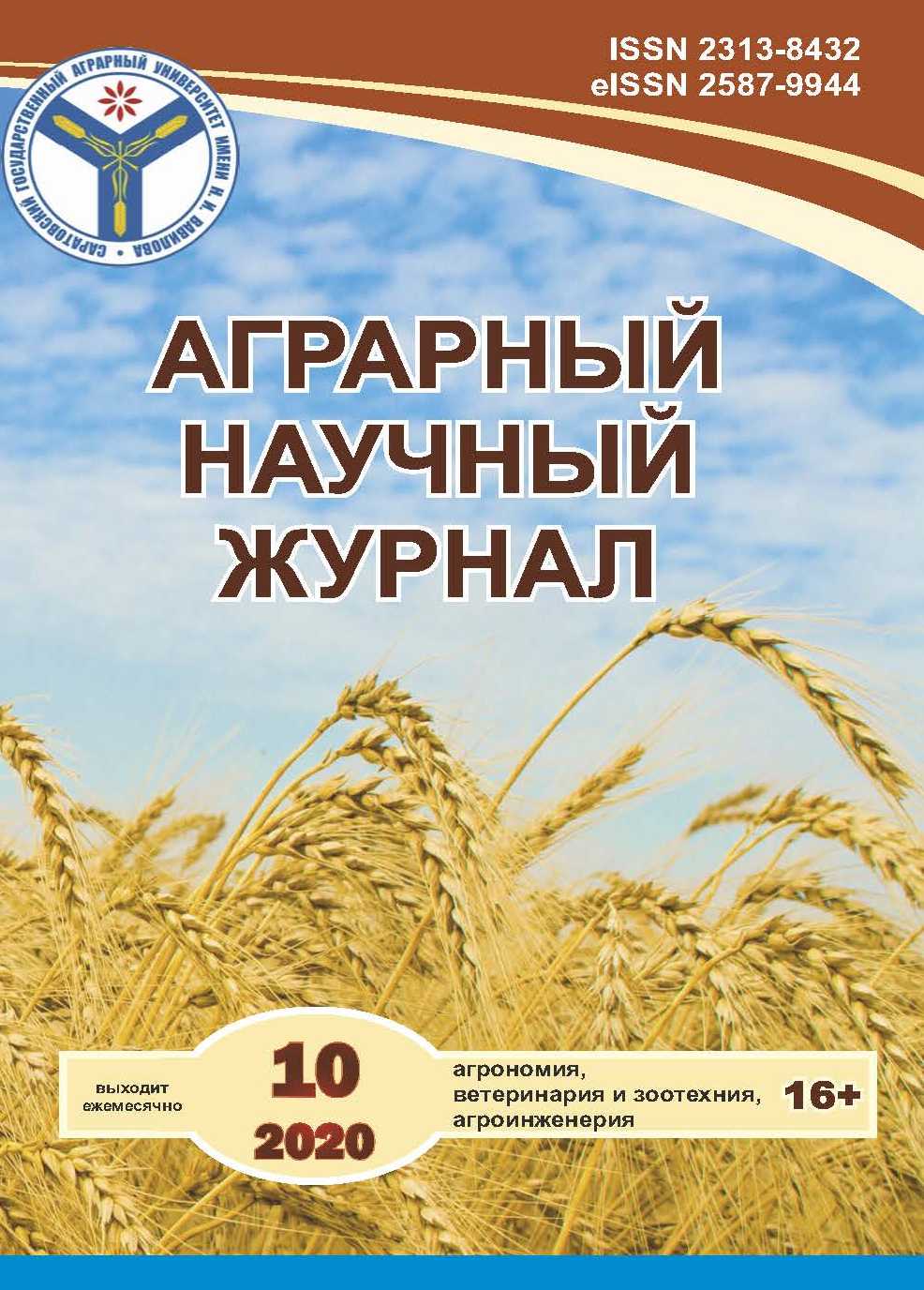The degree of dominance and heterosic effect in tomato hybrids on the main economic features
DOI:
https://doi.org/10.28983/asj.y2020i10pp14-18Keywords:
tomato, reciprocal hybrids, heterosis, quantitative signs, reciprocal effectAbstract
In Dagestan, like many southern subjects of the country, the environment of vegetable crops tomato is the most common crop. The basis for getting high tomato yields are heterosic hybrids. The research work was carried out during 2018-2019. on the experimental field of the Federal Agricultural Research Center of the Republic of Dagestan. The object of the study in 2018 were hybrids of tomato of the first generation of recyproccal interbreeding. In 2019, direct and reverse artificial crossings involved 11 pairs of initial forms of early-ripe and medium-ripened groups with higher productivity. Reciprocal hybrids with the participation of the variety Local in pair L 23/12, L 17/03, 23/04 and Spartacus on the grounds of "the number of fruit branches and the number of fruits" was high and, although the parents had the same indicators on these grounds (the number of fruit-bearing branches in the variety Local - 4.2 pieces, L 23/12 - 4.2 pieces, L 23/04 - 4.4 pieces and Spartacus - 4.0). In reverse combinations, heterosis was manifested, but the effect was lower compared to the indicators in direct combinations. The reciprocal hybrids of the pair of Varieties Spartacus and Local had a high heterosic effect in the reverse combination, when The Local acted as a maternal form (the degree of heterosis by the number of fruit-bearing branches 121% instead of 17% and the number of fruits on the first brush 124% instead of 22% in the direct combination of Spartacus x Local).Four reciprocal hybrid combinations with positive overdominance have been revealed. The degree of dominance in the "number of fruits on the first brush" ranged from - 0.4 to 104. The results of the study of the dominance and heterosis effect of the "number of fruits on the plant" indicate the high sectional value of the reciprocal hybrids studied.
Downloads
References
Ахмедова П.М. Особенности технологии выращивания томата в переходном обороте в условиях защищенного грунта Дагестана // Овощи России. – 2018. – № 2. – С. 43–47.
Велижанов Н.М. Обоснование и разработка основных элементов энергосберегающих процессов семеноводства корнеплодных культур (Beta vilgaris, Daucus carata L): методические рекомендации. – Махачкала: Из-во Даг. ФАНЦ, 2020. – 43 с.
Доспехов Б.А. Методика полевого опыта (с основами статистической обработки результатов исследований): учебник для высших сельскохозяйственных учебных заведений. – М.: Альянс, 2014. – 351 с.
Жученко А.А., Рыбченко Т.И. Комплексное использование генетических ресурсов растений // Актуальные вопросы развития органического сельского хозяйства: материалы Междунар. науч.-практ. конф. – Смоленск, 2018. – С. 40–51.
Изучение и поддержание генетической коллекции томата ФГБНУ ВНИИБЗР / О.А. Москаленко [и др.] // Научное обеспечение агропромышленного комплекса: материалы Х Всерос. конф. молодых ученых. – Краснодар, 2017. – С. 366–367.
Кулинцев В.В., Чумакова В.В., Кравцов В.В. Сорта и гибриды сельскохозяйственных культур селекции / ФГБНУ «Северо-Кавказский ФНАЦ». – 8-е изд., доп. – Ставрополь, 2018. – 176 с.
Некоторые достижения в селекции томата в Молдове / Н.И. Михня [и др.] // Современные тенденции в селекции и семеноводстве овощных культур: традиции и перспективы. – М.: Изд-во ВНИИССОКа, 2011. – С. 367–374.
Потанин В.Г., Алейников А.Ф., Степочкин П.И. Новый подход к оценке экологической пластичности сортов растений // Вавиловский журнал генетики и селекции. – 2014. – Т. 18. – № 3. – С. 548–552.
Проявление эффекта гетерозиса у томата по хозяйственно ценным признакам в пленочных теплицах / А.В. Кильчевский [и др.] // Вестник КрасГАУ. – 2015. – № 3. – Режим доступа: https://readera.ru/14081998.
Савченко И.В. Выведение новых сортов и гибридов сельскохозяйственных растений // Вестник Российской Академии наук. – 2017. – Т. 87. –№ 4. – С. 318–321.
Фадеев А.А., Фадеева М.Ф. Определение гетерозиса у реципрокных гибридов сои F1 // Аграрная наука Евро-Северо-Востока. – 2015. – № 2 (45). – С. 10–14.
Enujeke E.C., Emuh F.N. Evaluation of some growth and yield indices of five varieties of tomato (lycopersicon esculentum mill) in Asaba area of delta state // Global Journal of Bio-science and biotechnology, 2015, 4(1): 21–26.
Griffing B., Zsiros E. (1971). Genetics, 68, 3: 443–445.
Rahman M., Nahar M.A., Sahariar M.S., Karim M.R. Plant growth regulators promote growth and yield of summer tomato // Progressive Agriculture, 2015, 26: 32–37.
Downloads
Published
Issue
Section
License
Copyright (c) 2020 The Agrarian Scientific Journal

This work is licensed under a Creative Commons Attribution-NonCommercial 4.0 International License.








